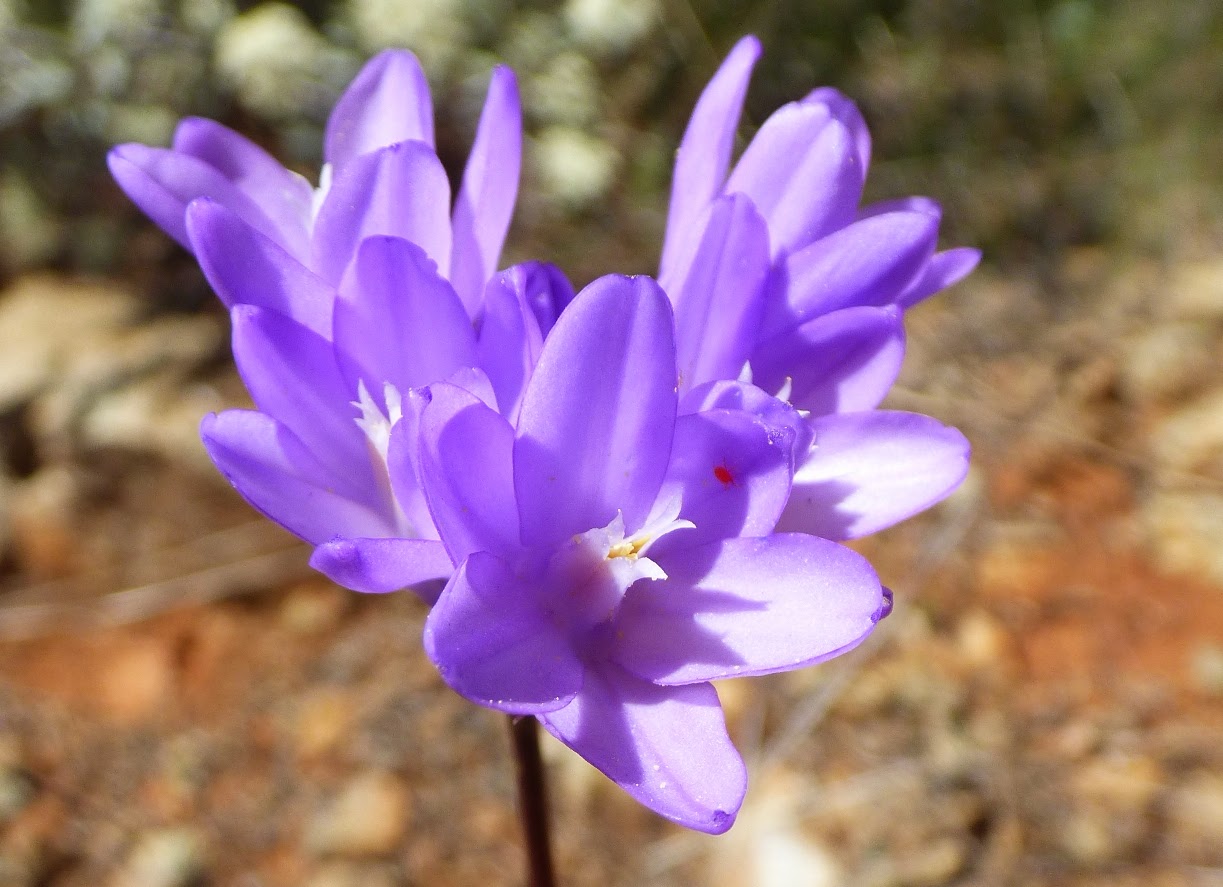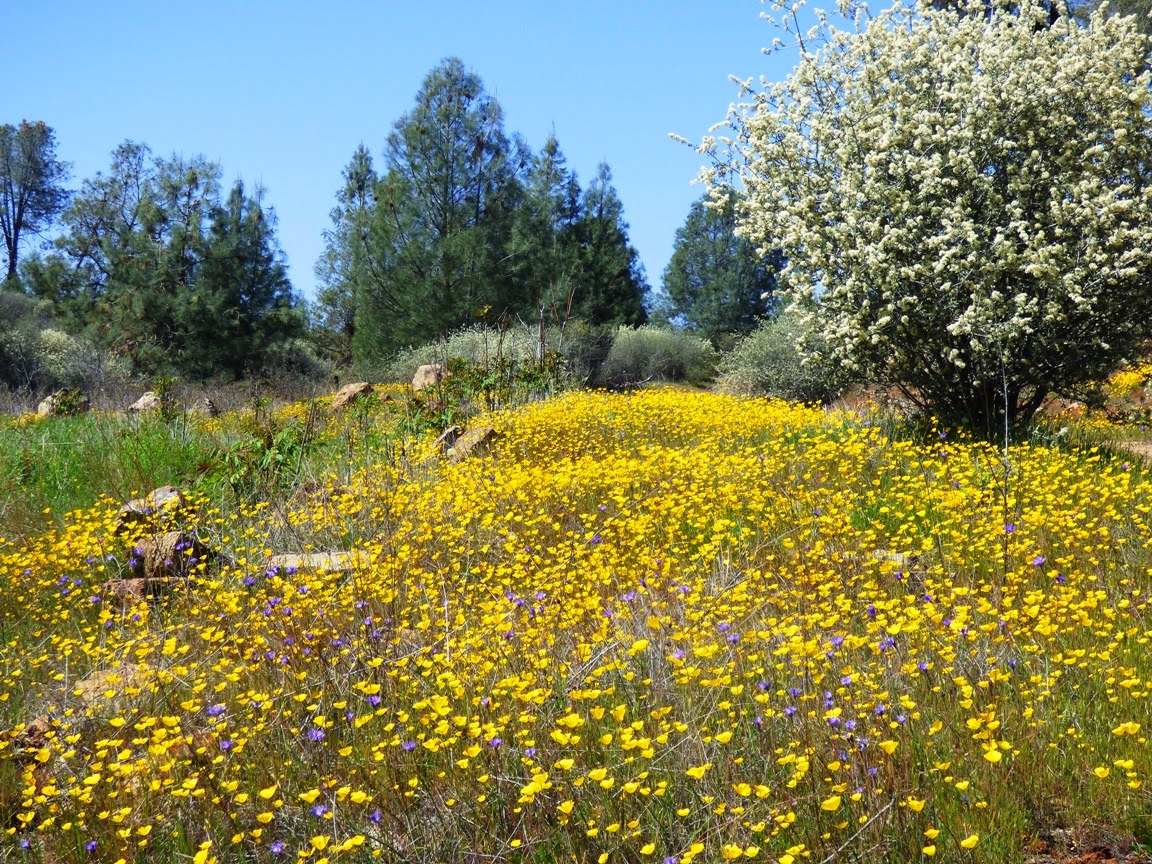When is the next bathroom? Will there be flush toilets at the campground? What about showers?
Geology field tripping in Death Valley National Park in the modern era is a far cry from the adventures of centuries past, specifically the 19th and 20th (the earth scientists living among the Native Americans in past centuries left no record, but they no doubt knew which rocks and minerals were valuable for tool making). In the 19th century the "earth scientists" were the few itinerant miners and prospectors looking for other kinds of valuable minerals, especially gold and silver (though the most valuable finds were probably the borates and talc). Just getting to the gigantic blank spot on the map was a challenge, and surviving in the harsh climate was a gamble.
At the beginning of the 20th century, access was improving, and rough dirt roads coursed up many of the valleys and crossed the less rugged passes of the mountain ranges. These roads were utilized by the first of the university-trained geologists who undertook the daunting task of mapping the Death Valley region. It wasn't that the rocks weren't exposed well. They offer some of the best exposures to be found anywhere. But the Basin and Range Province is so vast the few individuals who first worked in the region were limited simply by time and mortality. There was hardly enough time in one life to see it all!
By the 1930s, mining roads made for much better access, and the designation of Death Valley as a national monument by Herbert Hoover in 1933 led to increased tourist traffic. The mines began converting their hospitality facilities to tourist destinations, particularly at Furnace Creek. Paved highways allowed for quick trips out of Las Vegas or the Los Angeles region, and Death Valley began to feel just a little bit "urbanized". But not really. It can be easy to forget that this land is still the same harsh climate that it's been for the last few thousand years since the end of the ice ages. The heat and dryness can still lead to heat stroke and dehydration, and all it takes to bring one to the edge of mortality is a blown radiator hose or flat tire.
And so it was that we were making our way into the "Valley of Death" for our geology field studies class a couple of weeks ago. We had already searched for fossils at Sharktooth Hill, learned the basics of stratigraphy at Red Rock Canyon, and explored a dry ice age waterfall at Fossil Falls, but it was time to head east out of the Owens Valley and into one of the most isolated regions of the lower forty-eight states. We first crossed the relatively muted topography of the Darwin Plateau at the south end of the Inyo Range (top picture), and then took the Mr. Toad's Wild Ride down the steep highway to Panamint Springs and Panamint Valley. We made a short stop at the Father Crowley Vista Point (above). This site used to be a wide dirt lot on the side of the highway, but has been developed into a formal vista point with a simple toilet facility and protective fencing (gotta keep them tourists from falling over the cliffs...). The view is stupendous, with an excellent vista of the Panamint and Cottonwood Mountains across the way. There are complex relationships between the rocks of the Panamints, which are hinted at in the picture below, where dark flows of basaltic lava cover intensely folded Paleozoic carbonate rocks. The hill beyond exposes a granitic pluton.
The bottom of Panamint Valley holds more recent geologic phenomena, including the Panamint dune field and a fault scarp along the mountain base (the sunlit terrace)....
...and Panamint Dry Lake (below). Telescope Peak, the highest point in the park at 11,049 feet, is often graced by snow during the winter months. On the other side of the Panamint Range is Death Valley itself, which in large part lies at a depth of several hundred feet below sea level. Not many places around the world have such great relief.
From the Panamint Valley at about 1,000 feet we began climbing to cross the Panamint Mountains over Towne Pass at 4,956 feet, and in the setting sun we followed the long grade down the alluvial fan system to Stovepipe Wells at sea level. We pulled into the campground at dusk under a beautiful fiery sky.
As the western sky faded, the light grew in the east as the full moon rose above the Funeral Range.
We had reached the Valley of Death, and it was a beautiful place. And there were flush toilets and showers!
Geology field tripping in Death Valley National Park in the modern era is a far cry from the adventures of centuries past, specifically the 19th and 20th (the earth scientists living among the Native Americans in past centuries left no record, but they no doubt knew which rocks and minerals were valuable for tool making). In the 19th century the "earth scientists" were the few itinerant miners and prospectors looking for other kinds of valuable minerals, especially gold and silver (though the most valuable finds were probably the borates and talc). Just getting to the gigantic blank spot on the map was a challenge, and surviving in the harsh climate was a gamble.
At the beginning of the 20th century, access was improving, and rough dirt roads coursed up many of the valleys and crossed the less rugged passes of the mountain ranges. These roads were utilized by the first of the university-trained geologists who undertook the daunting task of mapping the Death Valley region. It wasn't that the rocks weren't exposed well. They offer some of the best exposures to be found anywhere. But the Basin and Range Province is so vast the few individuals who first worked in the region were limited simply by time and mortality. There was hardly enough time in one life to see it all!
By the 1930s, mining roads made for much better access, and the designation of Death Valley as a national monument by Herbert Hoover in 1933 led to increased tourist traffic. The mines began converting their hospitality facilities to tourist destinations, particularly at Furnace Creek. Paved highways allowed for quick trips out of Las Vegas or the Los Angeles region, and Death Valley began to feel just a little bit "urbanized". But not really. It can be easy to forget that this land is still the same harsh climate that it's been for the last few thousand years since the end of the ice ages. The heat and dryness can still lead to heat stroke and dehydration, and all it takes to bring one to the edge of mortality is a blown radiator hose or flat tire.
And so it was that we were making our way into the "Valley of Death" for our geology field studies class a couple of weeks ago. We had already searched for fossils at Sharktooth Hill, learned the basics of stratigraphy at Red Rock Canyon, and explored a dry ice age waterfall at Fossil Falls, but it was time to head east out of the Owens Valley and into one of the most isolated regions of the lower forty-eight states. We first crossed the relatively muted topography of the Darwin Plateau at the south end of the Inyo Range (top picture), and then took the Mr. Toad's Wild Ride down the steep highway to Panamint Springs and Panamint Valley. We made a short stop at the Father Crowley Vista Point (above). This site used to be a wide dirt lot on the side of the highway, but has been developed into a formal vista point with a simple toilet facility and protective fencing (gotta keep them tourists from falling over the cliffs...). The view is stupendous, with an excellent vista of the Panamint and Cottonwood Mountains across the way. There are complex relationships between the rocks of the Panamints, which are hinted at in the picture below, where dark flows of basaltic lava cover intensely folded Paleozoic carbonate rocks. The hill beyond exposes a granitic pluton.
The bottom of Panamint Valley holds more recent geologic phenomena, including the Panamint dune field and a fault scarp along the mountain base (the sunlit terrace)....
...and Panamint Dry Lake (below). Telescope Peak, the highest point in the park at 11,049 feet, is often graced by snow during the winter months. On the other side of the Panamint Range is Death Valley itself, which in large part lies at a depth of several hundred feet below sea level. Not many places around the world have such great relief.
From the Panamint Valley at about 1,000 feet we began climbing to cross the Panamint Mountains over Towne Pass at 4,956 feet, and in the setting sun we followed the long grade down the alluvial fan system to Stovepipe Wells at sea level. We pulled into the campground at dusk under a beautiful fiery sky.
As the western sky faded, the light grew in the east as the full moon rose above the Funeral Range.
We had reached the Valley of Death, and it was a beautiful place. And there were flush toilets and showers!




































































































.jpg)
.jpg)















